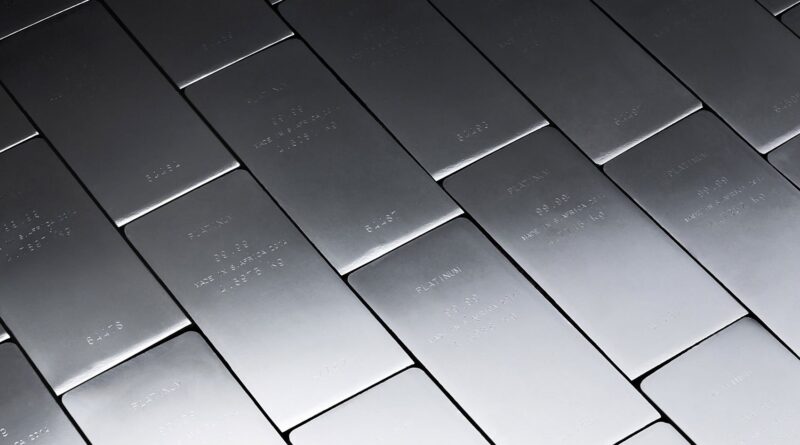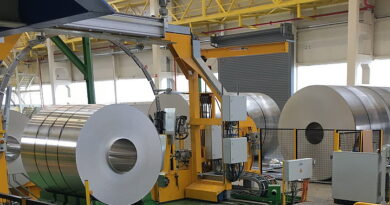Events in Q1’22 had huge impact on supply and demand for platinum
Unprecedented events in Q1’22 had a huge impact on both the supply of and demand for platinum, adding a layer of complexity on top of pre-existing issues, which will continue well into 2022. During the quarter, both demand (-26%) and supply (-13%) fell year-on-year leaving the market in surplus of 167 koz. However, for the full year, supply is expected to be 5% less than in 2021, yet demand to be 2% greater.
The surplus forecast for 2022 has now been reduced to 627 koz, which is also notably down on the surplus in 2021 (1,128 koz).
Constrained supply
Q1’22 saw confirmation that the processing of semi-finished inventory built up during the 2020 Anglo American platinum converter plant (ACP) shutdown had been completed. With mine production no longer receiving the one-off supply boost from the ACP inventory unwind, a clearer picture of underlying production levels emerged this quarter. South African production in Q1’22 fell 16% (-167 koz) year-on-year, to quarterly levels below those seen in 2019. Platinum mine supply in South Africa is forecast to decline 9% in 2022 (-421 koz) and is at risk of potential strike action related to three-yearly wage negotiations. Russian output also declined in Q1’22, down 11% year-on-year (-21 koz) with the operating environment in Russia becoming increasingly challenging due to the geopolitical situation and sanctions against Russia. Overall, global refined mine production is forecast to decline 7% (-425 koz) year-on-year to 5,872 koz.
Recycling supply was constrained during Q1’22 (-20% year-on-year) due to reduced volumes of end-of-life vehicles as a result of fewer new vehicles being sold – an issue that will persist yet ease throughout 2022. Full year platinum recycling supply is forecast to decline by 2% (-43 koz).
Notable automotive demand despite severe challenges
Against a backdrop of shortages of semiconductor chips and other parts, zero-COVID protocols in China, and disruption in Europe due to Russia’s invasion of Ukraine, total platinum automotive demand this quarter was remarkably strong. Demand was flat on Q1’21 (725 koz), and is expected to increase by 16% (+412 koz) in 2022, due to a rise in light duty vehicles produced, higher loadings due to tighter emissions regulations and continued platinum substitution to partially replace palladium in gasoline vehicle catalysts.
Jewellery demand rises in all regions except China
A jump in the number of weddings, price-led gains from gold in bridal and further growth for luxury brands saw platinum jewellery demand rise in Europe and North America in Q1’22 – a trend which is forecast to continue throughout the year. Jewellery demand also grew in Japan, albeit from a low base. In India, platinum jewellery demand rose in Q1’22, with fabrication expected to grow to a record high in 2022.
However, this could not offset a fall in jewellery demand in China, where platinum fabrication fell by 36% year-on-year in Q1’22, partly due to the negative impact of the Omicron outbreak. Sales are expected to gradually pick up in the second half of the year as the pandemic-related impact is expected to ease. Overall global platinum jewellery demand declined by 9% (-42 koz) year-on-year in Q1’22, and is forecast to decline 2% (-37 koz) to 1,886 koz in 2022.
Underlying industrial demand above 2019 levels
Petroleum demand in Q1’22 rose by 21% (+8 koz) year-on-year, especially in Europe and North America, where refining output had picked up considerably as the recovery from COVID continued. Similarly, as health service utilisation is recovering towards pre-pandemic levels, demand for platinum in the medical sector was up by 15% (+8 koz). Both sectors are forecast to see demand growth in 2022.
Meanwhile, platinum glass demand fell 56% (-179 koz) year-on-year in Q1 22 as expected. This seemingly dramatic drop was due to unusually high demand in Q1’21, as significant investment in new plant capacity was completed and plants were commissioned. This reduced requirement from the glass sector was a significant factor in overall industrial demand falling by 25% (-175 koz) in Q1’22 year-on-year, and the forecast of a 16% decline in 2022, albeit that 2022 industrial demand is still expected to be the third strongest year on record.
Investment demand affected by yen weakness and ETF liquidations
Bar and coin demand increased from 21 koz in Q1’21 to 60 koz in Q1’22. However, despite particularly strong demand in North America, global demand growth was limited by US dollar price strength sustained by a significant subsequent weakening in the yen which drove local platinum prices to their highest since May last year and which encouraged profit-taking among Japanese investors. This trend is expected to continue into the next quarter, with global bar and coin demand for the full year forecast to decline by 23%.
For ETFs, liquidations in Q1’22 stemmed primarily from one European ETF issuer and were contrary to investors’ finding hard assets attractive due to surging inflationary worries and elevated geopolitical and economic uncertainties. A modest inflow in ETF holdings over the remainder of this year is forecast, resulting in a 50 koz full-year outflow.




